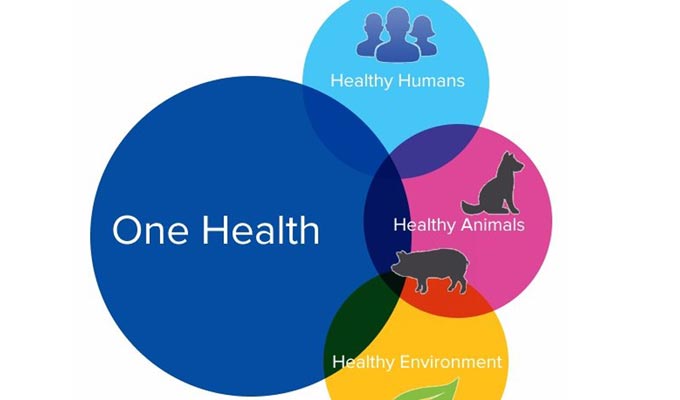These last years, doctors, vets and other scientists are been working together in the concept “one health”. This means peoples health and animal health are highly connected: there can’t be healthy people if animals are not, and vice versa. As you can read at veterinarians professional emblem: Hygia Pecoris Salus Populi (livestock hygiene is peoples health).
Their main task involves zoonotic diseases (those ones people and animals share), such as Leismaniasis and rabies. We all know that massive campaigns for vaccinating animals (mostly dogs) against rabies have saved millions of human lives.
Humans and animals share not only viral diseases such as rabies and BSE (mad cows disease), but also fungal and bacterial infections (tetanus, leptospirosis), and, of course, parasitic diseases caused by worms, fleas, ticks and mosquitoes. And we know the best option for having our home free of parasites is protecting our pets.
One Health concept is more than just vaccinating and providing antiparasitic treatments to our pets. It’s important to understand we all are living in the only available planet we have, and the way the animals (not only our pets) are living, also affects us. It’s fundamental to keep pets, livestock and wildlife hygiene and welfare. Environmental degradation produces diseases in wildlife which can mutate and become a problem for humans.
A serious crisis like the one we are suffering now must be taken into account for creating a new relationship between animals, people and environment. We must keep environmental safety for keeping our own safety.
During these hard times, vets are on duty for keeping One Health concept alive. It may sound banal, but if suffering 2019-nCoV may be hard, just imagine how could it be suffering it together with a flea infestation. Please, let’s keep using our common sense and taking all the necessary precautions. Everybody counts for helping to get rid of this big problem.
We are going to keep treating your animals as long as we can, but we recommend to book an appointment first. Only one person per animal will be allowed, and the waiting room must be kept empty.
One final question: have you ever wondered how is called the vet who works with just one species? Yes, it’s the doctor!
Liliana Aldeguer Cerdán col 793
English translation by Sergio Reina Esteban col 747



